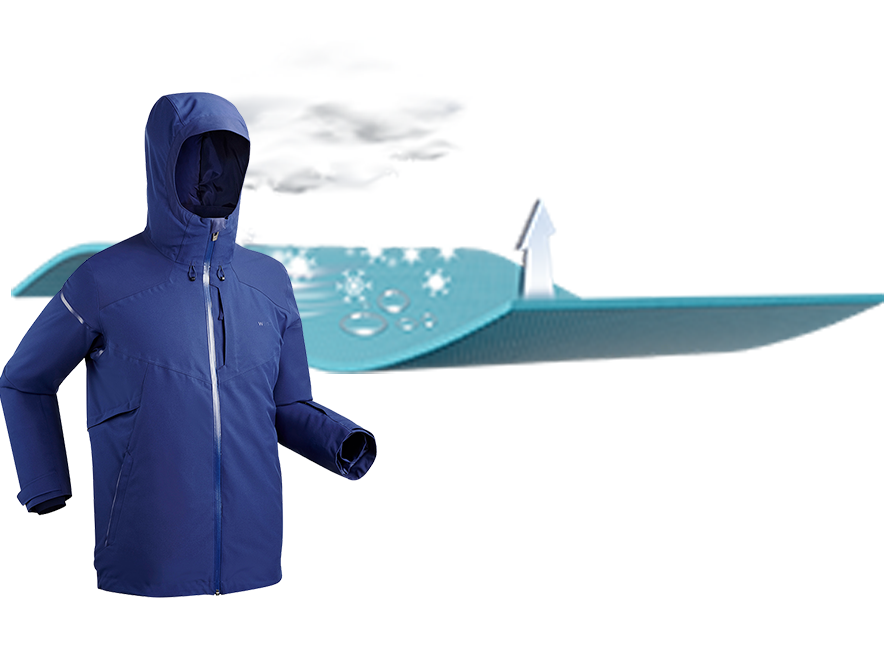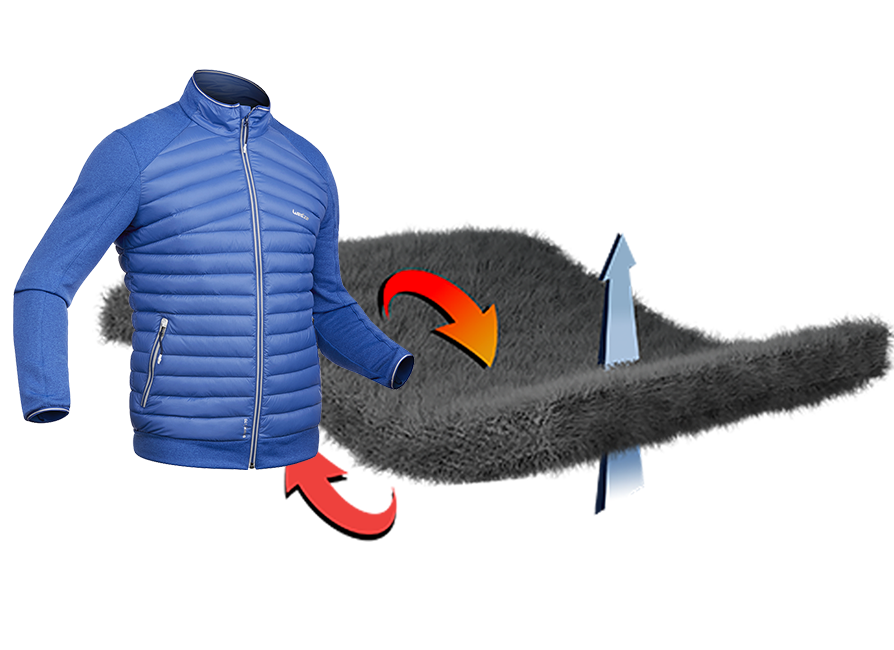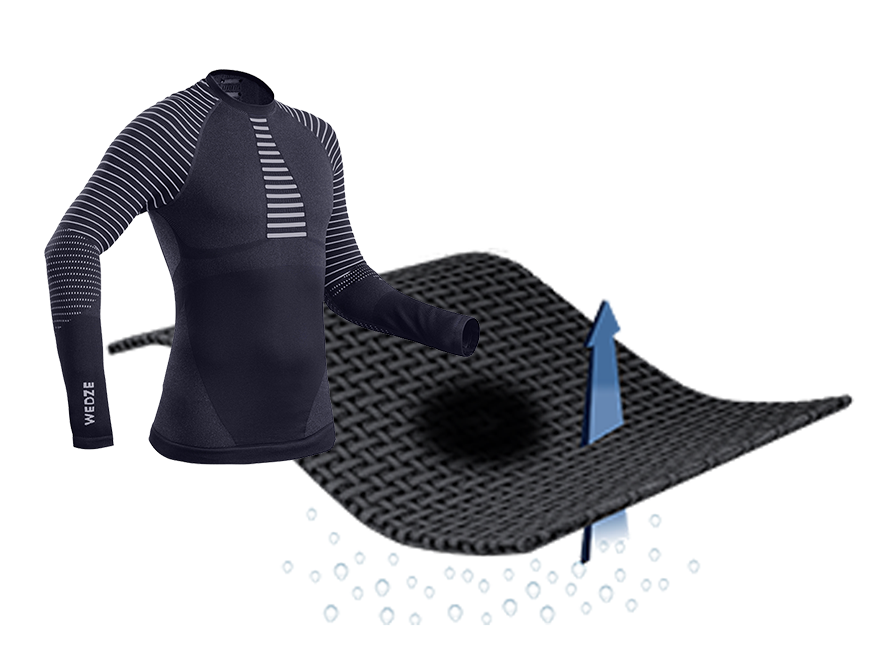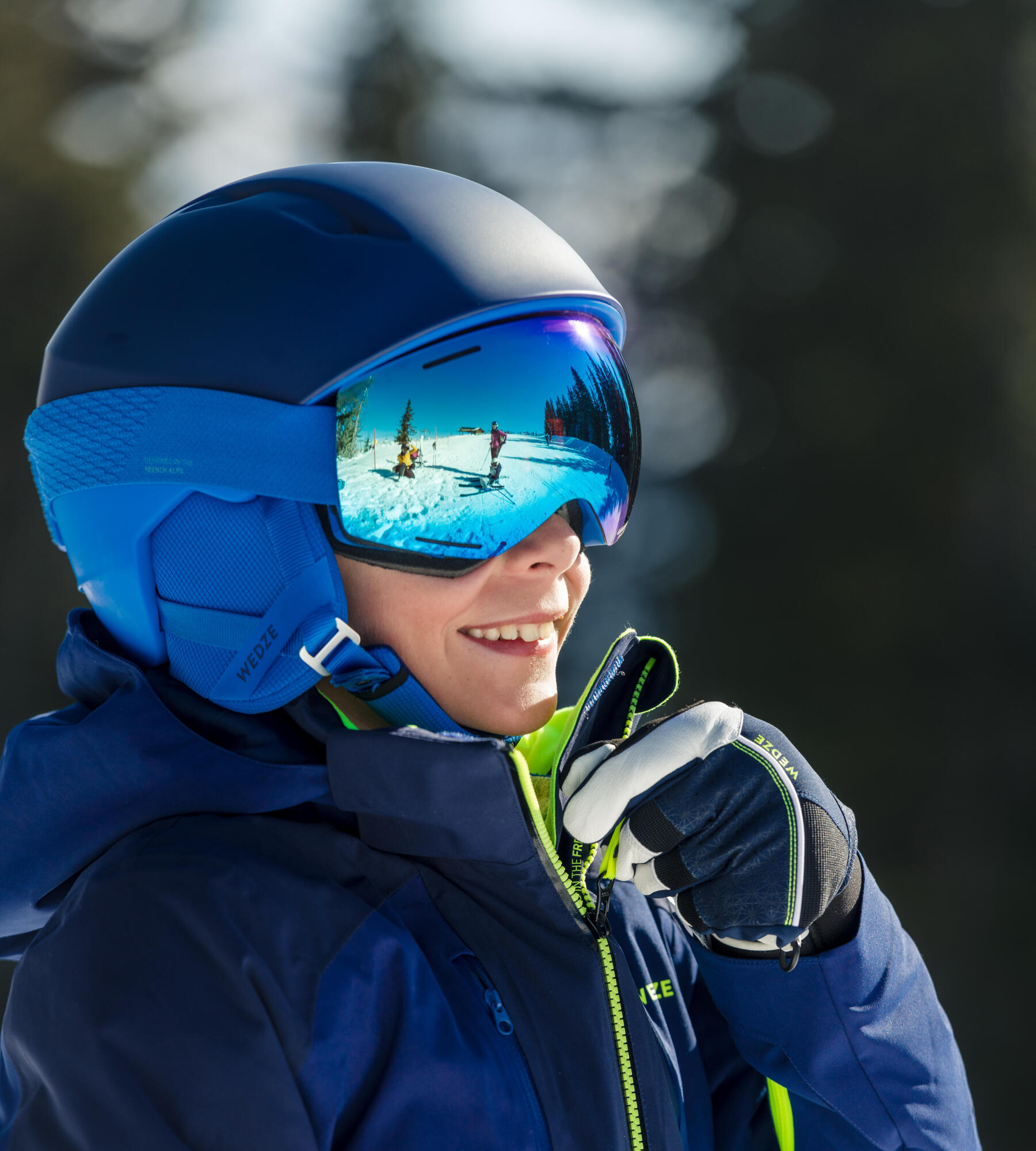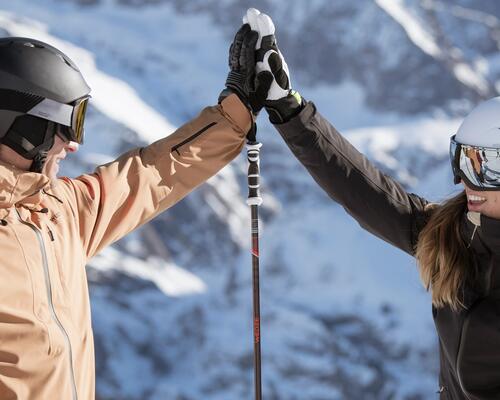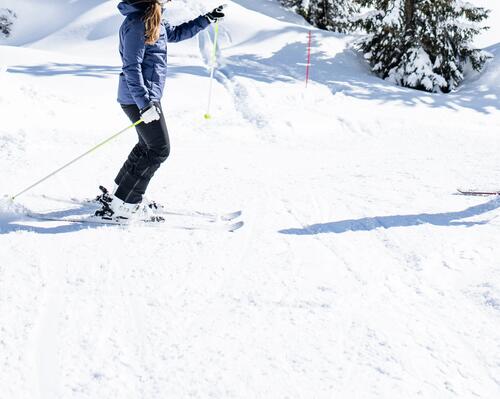3 Layers, 3 specific qualities, 3 times the comfort
The 3-layer system is based on a simple principle: water transfers heat 30 times more quickly than air. As, wet skin gets colder 30 times more quickly than dry skin.
So to stay warm in the worst conditions, first of all you must stay dry! Therefore your clothes need to distance body moisture from your skin, keep the air close to the body warm and dry and wick away moisture outwards.


